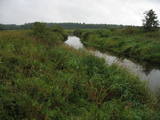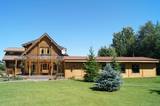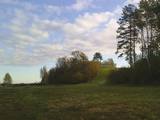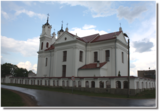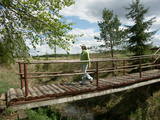| Нo | Название | Описание |
|---|---|---|
|
Топливный склад – это часть бывшего комплекса военных объектов, располагающихся в Папе. В настоящее время объект заброшен и не используется.
|
||
|
This is Latvia’s largest small-leaved lime tree (Tilia cordata). Some of its mighty branches are held up by supports. There are large holes in the trunk that have been covered up to prevent water entering the holes and causing even more rot. Just like many other trees of this size, this was a sacred tree in the past
|
||
|
«Смилтенес пиенс» гордится своей более чем вековой историей. Сегодня предприятие является третьим по производству сыра и шестым по переработке молока в Латвии. Сотрудничает примерно со 150 поставщиками качественного латвийского молока. «Смилтенес пиенс» – это единственное предприятие, производящее сыр «Латвияс». Продукция предприятия получила знак качества «Зеленая ложечка». Экспортируется в пять стран мира. Продукцию можно приобрести в фирменном магазине в Смилтене, который находится недалеко от предприятия. |
||
|
Популярный ресторан и бар расположен в длинном подвальном помещении средневекового деревянного здания в старой части Лиепаи. В меню – стейки, фаршированное свиное филе, кебабы из баранины, местная рыба, картофель, приготовленный разными способами. |
||
|
Palieņu pļavas starp Rūjienu un Rūjas ieteku Burtnieku ezerā, kurām raksturīga liela augu un putnu sugu daudzveidība. Tās robežojas ar bijušiem Rūjas zivju dīķiem, kas šobrīd aizaug ar mežu. Rūjas palienes var vērot gan braucot ar laivu pa Rūju, gan arī no ceļa, kas ved uz minētajiem dīķiem. Tur izvietots informācijas stends.
|
||
|
Ресторан «Марияс кафия» находится в центре города Резекне рядом с университетом, в здании со сводчатыми погребами. Латышская кухня: Холодный суп, тонкие и картофельные блины, свиное жаркое, свиные ребрышки, котлеты из телятины, тушеная баранина, жареная треска или форель. Особое блюдо: Салат из козьего сыра. |
||
|
This park is in a region of hillocks in the Karula highlands, and Lake Ähijärve is at its centre. The park offers a cultural environment of small farms, and it was set up to protect the unique cupola-shaped hillocks of the area. Main attractions: Scenic Lake Ähijärv (176ha), Rebasemõisa Tornimägi hill (137.8 m above sea level), undulating landscapes. |
||
|
The trip starts in Kuldīga – a jewel among the old towns in Kurzeme. The town centre is home to historic buildings dating back to the 17th – 19th century. Cobbled streets of Kuldīga, old buildings, the river Alekšupīte, running through the town, St. Catherine’s Church and organ music concerts in it, gourmet restaurants and a country delicatessen shop in the town centre is a great travel experience to enjoy in a leisurely ambience of a small town. The red-brick bridge over the river Venta is a landmark of the town. The widest waterfall of Europe, Ventas rumba (width ~100 m) lies on the Venta. Venta river promenade is a popular place for walking along the riverbank. A private transfer will take you from Kuldīga to the village of Snēpele, where you will start your hike. The trail will take you to the Pelči Manor, the manor park and the deer park next to the guest house “Mazsālijas”. Next, the Forest Trail will lead you through the Abava River Valley Nature Park up to the town of Sabile. The latter is home to a winery and cider house “Sabiles Sidra nams”, which offers tastings and sells the local wine and cider. The section along the Abava River Valley Nature Park is the most diverse in terms of landscape and terrain of a river valley in Kurzeme. The river valley with its numerous habitats and vast biodiversity reaches a depth of 30–40 m and is more than 300 m wide. One will find springs, waterfalls, rock outcrops, and boulders here. After the Forest Trail has meandered through meadows, oak forests and hillocks it finally reaches the town of Kandava. |
||
|
В известной мере уникальную, более 24 400 га территорию Советская армия использовала как полигон с учебными мишенями для военной авиации. История полигона началась с 1951 г., когда для использования территории в этих целях отсюда были ликвидированы четыре колхоза, закрыты дороги, перенесены несколько сотен крестьянских хозяйств и хуторов. Движение гражданских лиц на полигоне в Зварде частично восстановили только в 1993 году, когда было построено несколько новых дорог. Если хочется охватить всеобъемлющим взглядом и лесные массивы бывшего полигона, следует взобраться на «Курган офицеров» - искусственно созданный высокий холм, с которого армейские маневры координировались командирами. Не рекомендуется отправляться в походы по бездорожью!
|
||
|
Гостевой дом Aizvēji находится всего в 50 км от Риги и в 200 м от песчаного берега Видземского побережья – в тихой, живописной, ухоженной местности. Комплекс для проведения торжеств и отдыха, теннисный корт; накрывают столы для мероприятий. Бревенчатый дом с двумя банкетными залами и уютными комнатами. Летнее кафе расположено отдельно от гостевого дома. |
||
|
Городище Иденя расположено на северо-западном склоне озера
Лубана. С него открывается прекрасный вид на озеро и
болотистую местность вокруг озера. Заселено в 11 веке.
|
||
|
На западном берегу озера Цирма возвышается построенная из валунов в 1830 г. церковь. Известность ей принесла картина с изображением Девы Марии, которой приписываются чудотворные способности. Поэтому это - популярная конечная цель паломников. |
||
|
Tūrisma gide Ineta Jansone piedāvā ekskursijas grupām gar Kaņiera ezeru, iepazīstinot ar putniem, kuri mīt tā tuvumā. Kaņiera ezers ir vieta, kur migrācijas laikā apmetas daudzi tūkstoši ūdensputnu. Ezerā un tā apkārtnē sastopamas vairāk nekā 200 putnu sugu. Putnu vērotāju ērtībām vienā no Kaņiera ezera pussalām uzcelts putnu vērošanas tornis. Netālu no putnu vērošanas torņa izveidota koka laipa uz pontoniem, kura stiepjas cauri niedrāju audzei. Kaņiera ezers izceļas ar lielu daudzums zivju – tajā konstatētas gandrīz 20 zivju sugu. Izsens zvejnieku ciems - Lapmežciems atrodas skaistā vietā uz šauras zemes strēles starp Kaņiera ezeru un Rīgas jūras līci. Lapmežciemā izveidots zvejnieku muzejs, kuru var apmeklēt ekskursijas laikā, kā arī nobaudīt svaigi kūpinātas zivis. |
||
|
Der älteste und größte Kurort Litauens (seit 1794). Mikroklima (Luft der Umgebungswälder), salzhaltigee Quellen, Heilschlamm. Die Altstadt ist ein städtebauliches Denkmal. |
||
|
One of the most popular areas of uncovered sandstone in Latvia, known for its unusually smooth and sound-reflecting cliff wall (around 12m in height). Located on the right bank of the Salaca river, there is a place for tenting. A fun experiment is to stand in various closes opposite the cliff and to speak quietly. The echo will be heard either by the speaker or by people who are standing elsewhere. Located in the Salaca valley nature park and the Skaņaiskalns park.
|
||
|
Находится в центре небольшого Двиете.Белый образ костела виден издалека. Первую деревянную церковь здесь построили в 1775 году под руководством владельца местной господской усадьбы графа И.К.Вишлинга. Позднее церковь снесли и перевезли на Заринкское кладбище. Строительство современного Двиетского Римско-католического костела (в стиле необарокко) с двумя башнями в 1864 году осуществлялось при помощи финансирования, предоставленного графом Казимиром Платером – Зибергом. Храм был разрушен во время Первой мировой войны, поэтому до его восстановления и освящения в 1929 г. в качестве моленной использовался магазинный амбар (двускатная гонтина) господской усадьбы «Двиете», который находится со стороны дороги Двиете – Бебрене и теперь восстановлен. В 1940 году вокруг церкви построили каменный забор, покрытый черепицей, а в 70-х годах 20 столетия построили приходской дом. В храме особенный роскошный интерьер сакрального барокко, который считается самым роскошным в бывшем Даугавпилсском районе.
|
||
|
10 km garais pārgājienu maršruts iepazīstina ar vienu no vēl retajiem, cilvēka mazāk ietekmētajiem Daugavas senlejas posmiem. Tā sākums – Aizkraukle, finišs – Skrīveri. Gar upes krastu izvietotas atpūtas vietas. Maršrutu var braukt arī ar velosipēdu. |
||
|
Braucot cauri Kaives ciemam, var pievērst uzmanību Kaives muižas „atliekām”. Vietas vēsture ir sena, jo jau 1440. gadā Livonijas ordeņa mestrs piešķīra šeit īpašumu Johanam Kaivenam. Kungu māja gāja bojā 1905. gadā, bet pārvaldnieka ēku nopostīja 2. pasaules kara laikā. 1956. g. nodega kalte, bet pirms trijām desmitgadēm - muižas krogs. Līdz mūsdienām palikusi tikai 1861. gadā celtā magazīna (sarkana ķieģeļu ēka) pakalnā un tai blakus esošais parks, kurā izveidots neliels skulptūru dārzs, estrāde un atpūtas vieta. |
||
|
A small and forested territory with sulphurous springs, among which the most popular one is the Ellīte sulphur spring. It has sulphurous water with a low level of minerals, and the water supposedly has medicinal properties. The area around the stream is well-appointed, and a pathway leads to it. The stream is considered to be the source of the Iecava River. The restricted area is there to protect biotopes and protected plants which are in the area.
|
||
|
The tower is at the edge of the Dundaga-Mazirbe road, at the Šlītere Blue Hills. It offers a lovely view of lowland seashore forests, the local road, and a bit of the ancient shore of the Baltic ice sea.
|
||






